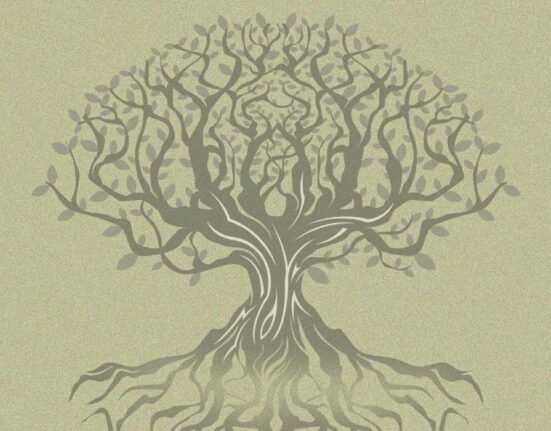The significance of the condition of ‘Burn out’ is so rampant in today’s time that it has even seeped into being portrayed on the screens of Cinema. Typically, being shown in the form of an employee being constantly irritated and frustrated at his job, this imagery closely highlights what the working conditions for employees is becoming like and the humongous mountain of burn out and stress which is being built up underneath it.
Kartik calling Kartik is a beautiful narrative in Hindi Cinema which depicts the extreme impact of chronic stress, lack of motivation, unappreciation, etc. leading up to having dissociative identity disorder where he experiences amnesia and is unaware of his second personality. Although the sources of dissociative disorders usually lie in a traumatic experience or event in a person’s life; the existence of enormous and consistent stress further aggravates the condition. Burnout is often confused with stress due to similar symptoms but due to increased research in this area more light has been thrown on this aspect, which is now a growing occupational issue worldwide.

According to International Classification of Diseases (ICD-11),
“Burn-out is a syndrome conceptualized as resulting from chronic workplace stress that has not been successfully managed. It is characterized by three dimensions: feelings of energy depletion or exhaustion; increased mental distance from one’s job, or feelings of negativism or cynicism related to one’s job; and reduced professional efficacy. Burn-out refers specifically to phenomena in the occupational context and should not be applied to describe experiences in other areas of life.”
Burnout has been classified by the ICD-11 as an occupational phenomenon and not a medical condition. Due to this, people might seek health services, but it is not classified as an illness or health condition. This change in definition from the one in ICD-10 gives an impetus for people and organizations to treat the phenomenon of burnout more seriously and seek help for the employees as well as create a work environment free from enticing such symptoms. The new definition of burnout is more detailed and creates a sense of urgency amongst people as compared to the earlier definition of linking burnout to only exhaustion. According to Christine Sinsky, MD, vice president of professional satisfaction at the AMA,
“Burnout is primarily related to the environment, such as when there is a mismatch between the workload and the resources needed to do the work in a meaningful way.”
Sinsky also adds that
“burnout is more prevalent amongst physicians but can occur in any profession”.
Our body’s reaction in order to cope with the external strains related to work and the workplace environment leads to burnout and is not related to innate traits of the individual. There are systematic and ingrained issues within the structures of how organizations work and expect from their employees which has close ties to Capitalism. Due to the highly self-indulgent and fast paced world, there is presence of short bound stresses known as acute stress, which is inevitable in nature, but chronic stress is not inevitable and should not become a part of a person’s daily life.
The early signs of a burnout can be mixed with feeling stressed and low productivity, but it is important to observe your own behaviors as well as the people around you to identify the following red flags:
- Difficulty in differentiating tasks in terms of priority: the person seems to see all tasks as high priority. They lack balancing efforts towards different tasks.
- Putting in a huge amount of time to work continuously: working overtime regularly or putting in extra hours for weeks can put a person in a debilitating state of stress.
- Deteriorating social skills: a change of behavior is observable which is not typical of the person, such as a lively and talkative person is very quiet and shows low energy. There is also increase in absence from workplace and lack of participation in meetings, events, etc.
- Feeling acrimonious most of the time: A person who constantly speaks negatively and is quite critical might be going through a burnout.

How to treat Burnout?
- Creating and seeking authentic and reliable social support: This group of friends, relatives, partner, etc. are those who are non-judgmental, supportive and reliable individuals. They provide support to the individual during tough times and encourage them to use healthy coping mechanisms.
- Creating self-awareness: Journaling and getting feedback from colleagues, friends, mentors, etc. can be useful in identifying patterns and trigger points of stress.
- Developing resilience and a growth mindset: By changing our reaction towards stress, we can turn it into an opportunity.
- Seeking Professional help: If the individual feels the symptoms have intensified a lot, he or she shouldn’t hesitate to consult a psychiatrist or a counsellor who can provide an empathetic environment for the person to understand his issues.
How can Organizations help?
- Measure and respond to cases of burnouts. This can be done through using Maslach Burnout Inventory.
- Creating a culture of shared purpose and meaningful work. The higher the sense of alienation from work the higher would be the disengagement level. The employees should feel aligned to what they do and why they are doing it.
- Building confidence and giving recognition. Successful leaders are those who are able to develop employees who can thrive in what they do and lead others. Increasing the self-efficacy of employees by giving praise and recognition to their positive contributions and efforts has been found to be more effective than financial incentives according to a McKinsey Survey.
- Develop mental health and well being initiatives at work. By showing to the employees that you value their health, the trust and loyalty towards the employer also increases. Through partnerships with the third party of counsellors and psychiatrists, either offline or through online portals, employees going through stress can share their work related issues in confidentiality and work towards it.
The efforts towards improving a state of burnout can only be enhanced when Organizations join hands to support their employees. The understanding that burnout is a sign of despair and not the inability of a person to handle stress can vastly change how Organizations function and what they expect from their employees. Organizations who are actually successful ramp up their employees’ skills, aspirations and productivity as well as their personal, social and psychological needs.












Leave feedback about this